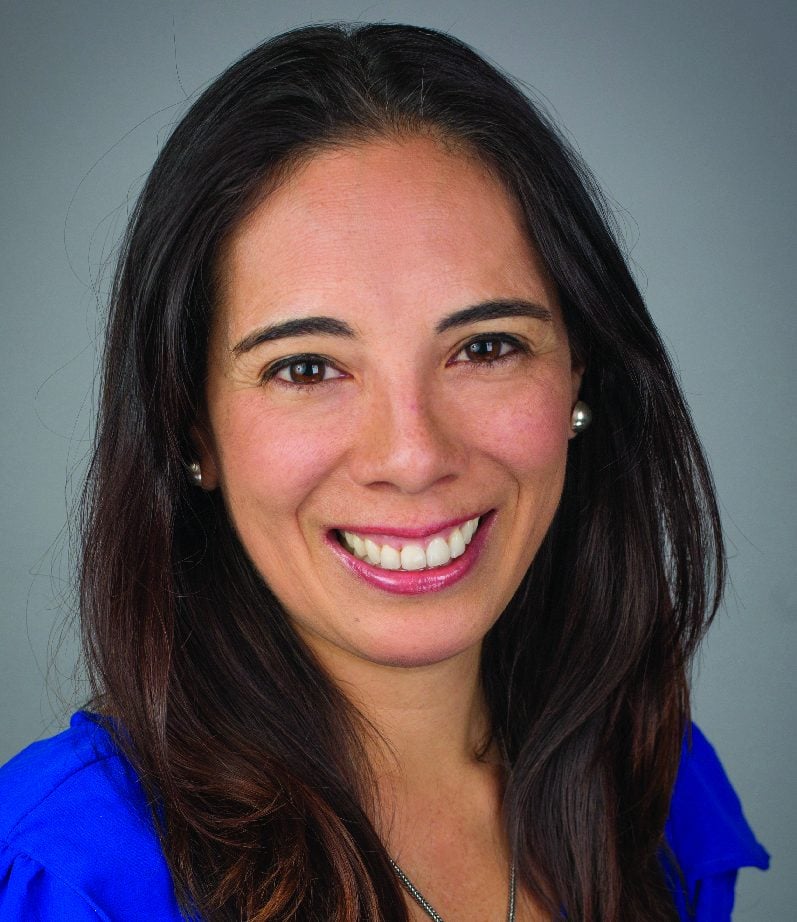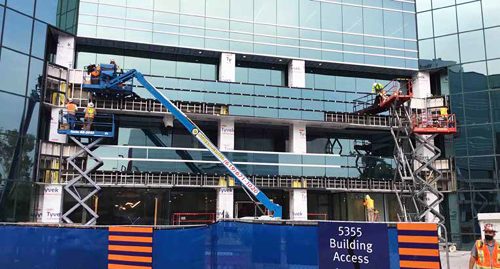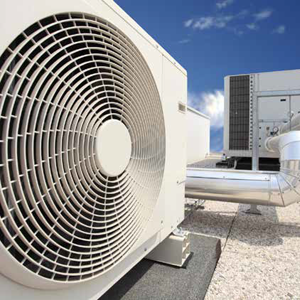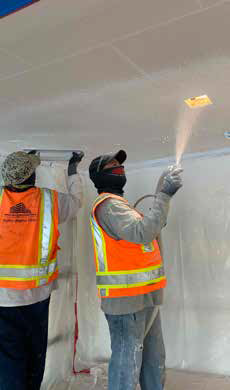 CAROLINA ALBAN-STOUGHTON
CAROLINA ALBAN-STOUGHTON
Director of Communication & Engagement
CARLSBAD CHAMBER OF COMMERCE
As many industries scaled back operations in March of last year because of the global pandemic, in California, state health officials exempted the construction industry from the “stay at home” health order, defining construction as essential. Performed mostly outdoors, and with enough social distancing, this industry never stopped. However, that doesn’t mean it wasn’t impacted. Wesley McNary is a Project Manager at Dempsey Construction in Carlsbad. He says that the initial safety modifications they implemented for business continuity have now become standard. For example, “we set up QR codes at our office lobby and job site entrances, which ask the standard COVID questions (Are you experiencing symptoms?, Have you traveled?, etc.),” says McNary. He adds that the way in which they conducted daily business also experienced a dramatic change. “The most impactful change was how we interacted with our clients. In the pre-pandemic age, we met face-to-face weekly onsite with owners, architects, and subcontractors, however this had to be modified to virtual meetings.” McNary says moving online has also changed permit processing. “All permits need to be submitted online where they used to be submitted in person. Even physically stamped sets of plans are a thing of the past. Cities now issue digital copies of the approved plans.”

Building for COVID
Jason Pasiut had just started his position as Building and Code Enforcement Manager-Building Official for the City of Carlsbad last March. A year later, Pasiut still remembers how quickly staff had to adapt to a new working reality. “Due to the forward thinking approach of city leadership, we already had the right technology in place and the division has been able to work remotely to process permits, conduct building inspections, enforce short term vacation rentals and business licenses, and more.” For Paisut’s department the shift also included the creation of a Video Inspection Program. “Born from the need to physically distance due to COVID, this program allows project applicants to connect with a building inspector virtually using Facetime, Microsoft Teams or Zoom to complete their inspection. The program has produced unexpected benefits, including increased convenience for residents, less driving and fuel consumption (which contributes to the city’s Climate Action Plan goals) and more efficient use of city employee time.”
While the shifts in daily operations in the construction industry are the most evident, Pasiut believes we may start seeing changes in how new buildings are engineered and designed for a COVID world, with the potential of those

changes actually becoming part of the next California Building Codes. (Carlsbad has adopted and currently enforces the 2019 California Building Codes.) “Our current codes took effect on Jan. 1, 2020 and remain active for three years. Every three years, the California Codes are updated and available for adoption by local jurisdictions. For example, there will be a supplement coming out for adoption on July 1, 2021 which proposes changes to the current California Mechanical Code related to ventilation in healthcare facilities, natural ventilation, general ventilation rates and air filtration. This is just one area of the codes we enforce that can benefit future building occupants.”

As a member of the local International Code Council Chapter, Paisut has a front row seat when it comes to discussions of code changes that could be beneficial in a COVID and post-COVID reality. “I have a unique opportunity to be directly involved in the code adoption process, where I can propose code changes and vote on approval of code updates. I plan on being involved over the next two years in the adoption of the next iteration of the California Building Codes, which the City of Carlsbad will review for adoption in 2023. My hope is that some of the proposals we establish locally can make their way into the codes during the code adoption process.”
With or without new codes, COVID has already sparked creativity and innovation in engineers, designers and architects who are using the pandemic as an opportunity to explore new ways to accommodate people in buildings. “We have started seeing commercial tenant improvement designs which incorporate a shared outdoor seating and/or public gathering space,” says Paisut. “We have also seen proposals for larger outdoor areas to be utilized for business or employee purposes for several of our larger business partners in the city. I certainly believe there will be post-COVID ideas being proposed in future designs. Things like touchless technology, voice activation, automatic doors, hands-free light and temperature control and anti-bacterial fabrics and finishes. It is an exciting time to be in the Building Safety industry. We look forward to helping our design community bring fresh, code compliant ideas to Carlsbad’s built environment.”
Designing for COVID

Managing Principal at PBK-WLC -an architectural and engineering design firm in San Diego- Jose Videla, is also very aware of discussions taking place about keeping COVID in mind in early designing stages. And while he believes there’s no silver bullet to designing for COVID, considerations about aerosol transmission of this virus are important. “There is a renewed focus in the HVAC design industry on healthy outdoor air flow rates, increased filtration, thermal displacement ventilation, and in some cases, single pass air treatment such us UVC emitters (ultra-violet technology),” says Videla. “Indoor/outdoor learning spaces, shielded reception areas, and touchless features at entry doors and plumbing fixtures for example are also gaining in popularity in new buildings and can be retrofitted as well.”
While the industry is looking into adaptations in new and existing buildings, according to Videla, part of the push is coming from building owners themselves as they “have become more serious than ever in this new COVID environment about trying to improve the resiliency of their building systems by following the latest recommendations from government agencies including the CDC.”
Designing for COVID also involves choosing what is used to build. “One major movement is toward building materials that are easily cleanable and have anti-microbial growth properties,” says Videla.
A year into the pandemic, the industry continues to look into ways to stay relevant. “One of the lessons learned from COVID,” says Videla, “is that a layered approach is helpful and any steps aimed at reducing the potential effects of COVID and/or other harmful germs are going to be a definite enhancement to a building’s performance.”
